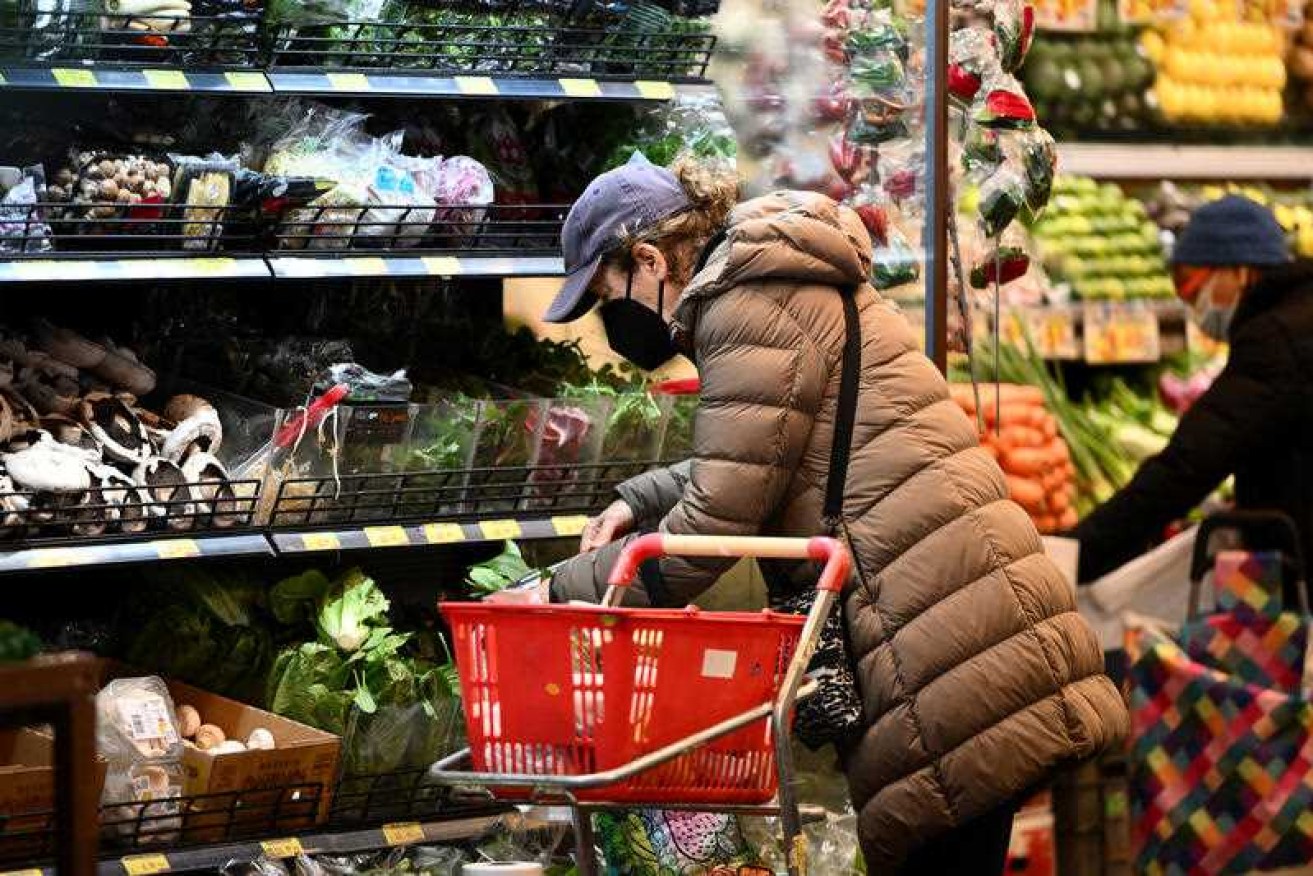‘Mighty consumers’ drive growth, but cash splash nears end


The national economy expanded by 0.4 per cent in the June quarter, new figures show. Photo: AAP
The Australian consumer cash splash is continuing, driving further robust growth in the national economy despite this year’s steep rise in interest rates.
But the rate is expanding as eight hikes in the official cash rate in eight months begin to take effect, with more expected in the months ahead.
September quarter national accounts, released on Wednesday, showed the economy grew by 0.6 per cent, which followed a higher 0.9 per cent lift in the June quarter.
In the 12 months to September, the economy swelled by 5.9 per cent from a low base in the third quarter of 2021 caused by lockdowns.
“The September quarter was the fourth consecutive quarter of economic growth, following a contraction in the September quarter 2021, which was impacted by the COVID-19 Delta outbreak,” Australian Bureau of Statistics head of national accounts Sean Crick said.
Experts were anticipating a 0.7 per cent lift over the quarter, with some economists expecting a slightly higher result.
The ABS said household spending drove growth in the September quarter, lifting 1.1 per cent for the quarter and contributing 0.6 percentage points to GDP.
But the amount households are squirrelling away continued to fall, with the household savings to income ratio sliding from 8.3 per cent to 6.9 per cent over the three months.
BIS Oxford Economics’ Sean Langcake said the savings rate was still a little higher than before the pandemic.
“But the scope for consumers to fund growth in consumption from savings is dwindling quickly,” he said.
EY chief economist Cherelle Murphy said “the mighty Australian consumer” had powered through the quarter, adding another $3.2 billion to the Australian economy and contributing very strongly to the growth rate. But she sounded a note of warning.
“We expect the second half of 2022 will be the last hurrah in the post COVID-19 services bounce back,” she said.
“As the RBA continues to increase rates to bring inflation back down, consumers will be left with little choice but to adjust their recent spending binge, and businesses will feel the pinch accordingly.”
The Reserve Bank lifted the official cash rate by 0.25 per cent on Tuesday, its eighth consecutive rise in a row.
Borrowers, subjected to 3 percentage points of rate hikes in eight months, have experienced the fastest rate of monetary tightening since inflation targeting began in the early 1990s,” Ms Murphy said.
“When combined with higher prices – especially for basics like energy and food – along with real wages falling and house prices declining, the only profile for consumption is a softer one.”
She said “the day of reckoning is coming”.
“It is possible we have already seen the start of this with a fall in October retail sales. Government support, having boosted consumption over the past 12 months, is starting to dry up, as indicated by the household saving ratio falling back to pre-pandemic levels,” she said.
In brighter news for consumers, robust wage growth is finally showing up in the national accounts, with compensation for employees increasing 3.2 per cent in the past three months – the fastest growth since 2006.
The tight labour market is fuelling wage growth, with the unemployment rate hovering at 50-year lows.
The figures also revealed early signs of a recovery in the construction sector, with new and used dwelling construction lifting by 3.4 per cent.
Easing supply chain and labour shortages contributed to the rebound, with the pandemic-bolstered pipeline of work expected to keep the sector busy for a while yet.
Net exports detracted 0.2 percentage points from real GDP in the September quarter due to Australians travelling abroad in large numbers and bad weather disrupting commodity exports.
Treasurer Jim Chalmers said despite the strong headline growth figure, high energy prices, inflationary pressures and rising interest rates were already weighing on household budgets.
“We’ve also seen more rate hikes, floods continuing, and further evidence of the deteriorating global growth outlook which we expect to weigh on growth in coming quarters,” he said.
Dr Chalmers said there were signs of a weakening global economy in the ABS figures, with prices for iron ore, metallurgical coal and other mining commodities falling due to softening demand from China.
“At the same time, import prices increased, partly impacted by the depreciation of the Australian dollar,” he said.
Shadow treasurer Angus Taylor said Wednesday’s data showed cost-of-living pressures were really starting to bite for Australians.
“Rising interest rates, combined with soaring grocery prices, rents and power bills, are starting to take a toll on household budgets,” he said.
“Under Labor, spending is growing faster than incomes with cost of living eating into people’s savings.
“Families will be feeling the pinch as they go into Christmas and it’s only going to get harder in the New Year with thousands of households due to start rolling off fixed interest rates.
The big four banks have announced they will pass on this week’s interest rate rise in full to mortgage holders.
For the average $750,000 loan, the 25 basis point lift will add $1251 to monthly repayments since May, according to RateCity data.
– with AAP








